Book Reviews (2011-12) by Joseph M. Sherlock
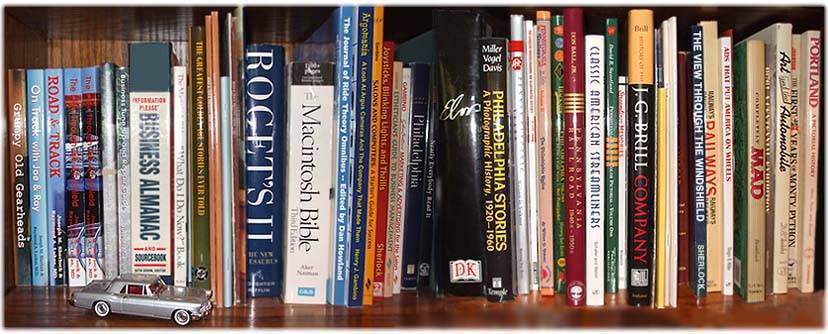
More recent book reviews can be found here.
'The Tyranny Of Clichés' by Jonah Goldberg
Subtitled 'How Liberals Cheat in the War of Ideas', this book dismantles the progressive trite phrases and myths that are passed-off as wisdom in schools, media and politics. You know the ones - those considered to be "settled science" or dogmatic untouchable sacred cows.
I found this book funny and informative. It was less scholarly and more readable than Jonah's best-seller, 'Liberal Fascism'.
The book is full of interesting information. Here's an excerpt from the chapter titled 'Ten Guilty Men': "In a groundbreaking study, Marvin Wolfgang (whom the British 'Journal of Criminology' described as "the most influential criminologist in the English-speaking world") looked at the records of all of the boys born in 1945 in Philadelphia and who attended school (around 10,000). He found that just under 7% of the boys in Philadelphia committed more than half the crimes of that cohort.
Moreover, he followed the Class of '45 for three decades, until 1975. Dismayingly, most did little jail time. On average 14 murderers in the group spent a mere 4 years in prison. When interviewed, these worst of the worst admitted that they'd committed anywhere from eight to eleven crimes for each offense they were arrested for. That is not to say they were arrested for 8 to 11 crimes. They got away with 8 to 11 other crimes for each crime the police knew about. Wolfgang found that if each boy in the criminal 7% had stayed just one more year in jail, Philadelphians would have suffered 7,200 fewer serious crimes."
My favorite chapter was the one on Social Justice, a concept proposed by theologian Luigi Taparelli d’Azeglio in 1840 as a way to defend civil society from the ever-increasing intrusions of the state. "Social justice, according to Taparelli, was the legitimate realm of justice beyond formal legal justice." Pope Leo XIII popularized it in his 1891 encyclical 'Rerum Novarum'. But 'social justice' was soon hijacked by activist do-gooders, who completely changed its meaning to fit their socialist ways.
Goldberg has written, "Social-ism is about what activists call 'social justice', which is always "progressive" and egalitarian but not invariably statist. As a practical matter, "social-ism" works from the assumption that well-intentioned leaders and planners are both smart enough and morally obliged to, in Obama's words, "spread the wealth around" for the betterment of the whole society in general and the underprivileged in particular."
No matter that the designated 'underprivileged' are, as author Kathy Shaidle, who experienced poverty as a child and young adult, "the poor are the rich Jesus warned you about."
Social Justice used to justify everything from illegal alien sanctuaries to cookies for the homeless - as if they don't already get enough sugar from all those bottles of cheap fortified wine. And don't get me started on the Fat Poor. If someone was really poor, they'd be thin. Rail thin.
'The Tyranny Of Clichés' is a well-written book and I recommend it. Buy an extra copy and slip it to a loud-mouthed liberal you know. It will give them apoplexy - hey, that's one less vote for Obama this Fall. (posted 5/28/12, permalink)
'Thinking Fast and Slow' by Daniel Kahneman
A Nobel prize-winner writes a book. It receives glowing accolades by reviewers. One wrote that the author "takes us on a groundbreaking tour of the mind and explains the two systems that drive the way we think. ... Engaging the reader in a lively conversation about how we think, Kahneman reveals where we can and cannot trust our intuitions and how we can tap into the benefits of slow thinking." The book claims to improve decision skills by showing how the mind works.
All of this sounded good to me. Until I started reading this 500 page load of tedium. I learned nothing about making better decisions from this book and found myself questioning Kahneman's central premise. I can summarize the book in 10 words: Initial impressions and rule-of-thumb shortcuts don't always work. Well, duh.
Sum-up: Don't bother. (posted 5/16/12, permalink)
'Killing Lincoln: The Shocking Assassination that Changed America Forever' by Bill O'Reilly and Martin Dugard
I've mentioned before that, when I read books such as this, I realize how little history I know. I do remember reading Jim Bishop's 'The Day Lincoln Was Shot' (originally published in 1955) when I was in high school. That book pales in comparison; it lacks the detail and the sheer can't-put-it-down excitement that 'Killing Lincoln' offers.
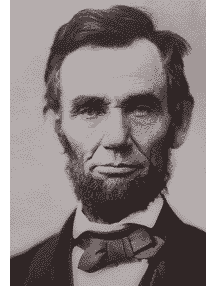
Authors O'Reilly and Dugard guide readers though President Lincoln's last days, the closing of the Civil War and the evolving conspiracy that ended with Lincoln's assassination. The many coincidences and odd convergences of events - as painted by the authors - will leave you amazed.
Even if you can't stomach Bill O'Reilly on television, don't let his co-authorship color your decision to check out this book. 'Killing Lincoln' is history presented so that it reads like a paperback thriller. Highly recommended. (posted 5/2/12, permalink)
'Unbroken: A World War II Story of Survival, Resilience, and Redemption' by Laura Hillenbrand
When I read the summary of the story: one man's life as a juvenile delinquent, champion Olympic runner and American POW, I thought, "Nice magazine article material, but how will this story fill a 400+ page book?" Amazingly and compellingly, it turns out.
Author Hillenbrand is marvelous - she pens this non-fiction story in a gripping manner. This book has no dead spots; the reader is drawn in and compelled to absorb every detail.
Louie Zamperini is a young thief and troublemaker, who finds peace in the discipline of running. The track-and-field star competes in the 1936 Olympics and becomes part of the US Army Air Force when WW II breaks out. His B-24 bomber is shot down over the ocean, he drifts in the Pacific for 47 days, is captured by the Japanese and endures unspeakable treatment as a POW. Louis finally is freed and struggles to reestablish his place in the world and shake off the demons and nightmares brought on by his hellish war experiences. He ultimately succeeds and finds peace, God and redemption but his journey is very much worth the telling.
The author vividly paints the horror of the Japanese military during the period. Japan imposed atrocity, torture and death on a staggering scale. Japan held 132,000 POWs - one in four died while imprisoned. Of the 34,648 Americans held by Japan, 37% died, compared with only 1% of Americans held by Nazis and Italians. Thousands of others were beaten, burned, clubbed or otherwise tortured. Knowing that they were going to lose the war, the Japanese military planned to execute all POWs. Thankfully, the atomic bombs stopped them from acting.
Hillenbrand shows us the limitations of medical treatment 70 years ago, the lack of safety in quickly-assembled and mostly-untested war planes, the woefully inadequate knowledge about post-traumatic stress and 'shell shock' in those days and the bureaucracy, ignorance and unresponsiveness of overburdened, overwhelmed War and Veterans' departments
'Unbroken' is a testament to the resilience of the human mind, body, and spirit. It is impossible to put down even during Louie's most horrific and painful moments, be it torture sessions or the suffering brought on by PTSD. But, by the end, it becomes an inspiring book and a story well told. Highly recommended. (posted 4/25/12, permalink)
'Eisenhower - The White House Years' by Jim Newton
Many people think of the 1950s as a fun decade of poodle skirts, finned cars and Elvis. Obviously, they haven't read David Halberstam's weighty tome, 'The Fifties'.
In his book about Dwight Eisenhower's presidency, author Jim Newton brings some serious history to the table, recalling the events which shaped the Eisenhower era. Ike accomplished much during his presidency but was seen by opponents as someone who liked to golf more than govern.
America's thirty-fourth president got the Korean conflict to a manageable cease-fire state and brought international trade opportunities to the Midwest with the opening of the St. Lawrence Seaway. His championing of the Interstate highway system profoundly improved U.S. travel and the movement of commercial goods. During most of his two terms, the nation experienced considerable economic prosperity.
Ike was 62 years old when he became president. When he left office he was almost 70. He had Eisenhower entered the 1952 presidential race as a Republican, to crusade against "Communism, Korea and corruption."
Newton tells us that Ike was a moderate Republican but loved covert ops, urged on by the Dulles brothers, CIA Director Allen and his secretive sibling, Secretary of State John Foster. The overthrow of troublesome Mohammad Mosaddegh in Iran and rapid installation of Mohammad Reza Shah Pahlavi as ruler - the last Shah of Iran - was accomplished with the heavy hand of the CIA and British MI6.
We learn that Ike had a bad temper and often pouted when things didn't go his way. He had myriad health problems during his two terms, suffering heart attacks, a stroke and was plagued with Crohn's Disease - a serious intestinal problem. The public had a sunnier picture of Ike and for much of his presidency he had 60-plus percent approval ratings.
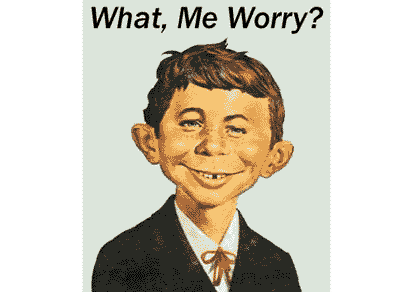
It's amazing to read a history book such as this and realize that many of the chronic international irritations of the Eisenhower Era have the same names as today: North Korea, Cuba, China/Taiwan, Russia, Iran, Egypt and Israel/Palestine. Ike never used the atomic bomb but he realized the power of the nuclear threat and sent messages to our enemies that he would consider tactical nuclear strikes if warranted.
The author has included details of the complex relationship between Ike and his vice-president, Richard M. Nixon. Eisenhower was ambivalent about Nixon and considered dumping him from the ticket in '56. Ike gave him the dirty work to do but not much political support. Newton has noted that some theorized that Eisenhower's late and lukewarm endorsement cost Nixon the 1960 election. Ike gave Dick many unpleasant tasks (Nixon's car was pelted with eggs and rocks during a 1959 tour of Latin America, Nixon was forced to put up with Nikita Krushchev's antics during the Kitchen Debate in Moscow) while Eisenhower stayed above the fray.
It's no secret that Richard Nixon was difficult to like. The author reports that Ike's secretary, Ann Whitman, once remarked that Nixon "sometimes seemed like a man who is acting like a nice man rather than being one."
In his second term, Ike was caught off guard by events that made his Presidency look less competent and confident. The Sputnik satellite launch of 1957 caught the administration flatfooted; Eisenhower's support of the embryonic space program had been lukewarm at best. The 1958 recession was a bad one and people always blame whoever is in the White House when times get tough.
Fidel Castro's overthrow of the Batista government in Cuba left the Eisenhower team shaking their heads - not sure quite what to do or make of this rebel. The CIA, led by the hapless Allen Dulles, offered little guidance. The Russian downing of the America's U2 spy plain over Soviet territory caught Ike and his minions in a big lie and became a major embarrassment.
Eisenhower was lukewarm to enforcement of civil rights, not wanting to rush things; his Administration's progress on this issue was mostly a series of baby steps.
At best, his was a Presidency of not of bold moves but of steady progress. And Ike "kept the peace." As administrations goes these days, that's not a bad thing. This book seems to be a thorough and impartial study of the Eisenhower presidency. Recommended. (posted 4/5/12, permalink)
'American Icon: Alan Mulally and the Fight to Save Ford Motor Company' by Bryce G. Hoffman
Many books have been written about the problems of the American auto industry. Some notable ones include: 'On a Clear Day You Can See General Motors' by John Z. DeLorean & J. Patrick Wright (1979), 'Car Wars' by Robert Sobel (1984), 'The Reckoning' by David Halberstam (1986) and 'Rude Awakening: The Rise, Fall, and Struggle for Recovery of General Motors' Maryann Keller (1989).
Car enthusiasts have complained about Detroit's shortcomings and its arrogance for years, many publicly in blogs, letters to editors and web postings. I'm one of them. Back in 2002, I published 'An Open Letter To Detroit', enumerating Detroit's product problems and suggesting solutions. In another blog posting, I pointed out that Studebaker had failed because:
• It had high labor costs, hindering its ability to compete.
• It had a long history of quality problems which drove the public to other, more reliable makes - even though the company offered some cool-looking cars.
• Its managers stressed short-term earnings rather than long-term vision.
That was Studebaker during the '50s and '60s. General Motors, Ford and Chrysler committed the same errors during more recent decades. Some things never change, I guess. (Until Alan Mulally came along.)
In 2006, I addressed Detroit's insular culture in 'The Perfect Storm'. I identified five fundamental problems with Detroit's Big 3, concluding, "Detroit's business model of the past 60 years is no longer working. Hype and bullshit cannot compete with competence, product quality, manufacturing flexibility and the forward march of technology." Many other bloggers and print writers have vented similarly.
'American Icon' is not just about auto industry problems but tells the remarkable story of how one company - Ford - implemented bold solutions and changed the ol' Detroit Game. Author Bryce G. Hoffman provides a compelling, behind-the-scenes account of an epic turnaround. With his company on the verge of collapse and feeling in over his head, CEO Bill Ford Jr. went outside the auto industry and recruited Alan Mulally, a respected Boeing executive to replace him as CEO. This rocked Detroit observers and the Ford family, showing courage and a true sense of humility on Bill Ford's part.
Many - including me - had doubts about the ability of an airplane exec to translate his success to a high-volume automaker. But Alan surprised everyone, including the condescending and arrogant Rick Wagoner, CEO of General Motors, who was later fired - by President Obama - after the government took over GM.
 Hoffman's tome moves a bit clumsily at first, as he tries to compress the history of Ford and the automotive industry into a single chapter. That's difficult to accomplish; probably two or three chapters would be needed to give the casual reader a better sense of the decades of drama at FoMoCo. Lost in the telling is the degree of senility, intransigence and paranoia of Henry Ford in his final years and the secrecy and negative attitude of Henry II in the '70s, which resulted in uninspired cars. Hoffman's tome moves a bit clumsily at first, as he tries to compress the history of Ford and the automotive industry into a single chapter. That's difficult to accomplish; probably two or three chapters would be needed to give the casual reader a better sense of the decades of drama at FoMoCo. Lost in the telling is the degree of senility, intransigence and paranoia of Henry Ford in his final years and the secrecy and negative attitude of Henry II in the '70s, which resulted in uninspired cars.
Under reported, too, was the revival of Ford, Mercury and Lincoln during stylist Jack Telnack's 1980s 'jelly bean' reign ('83 Thunderbird, '84 Lincoln Mark VII and '86 Ford Taurus), when Ford became an industry style-setter and a company with better perceived quality because of the 'Quality is Job One' efforts, real and promotional.
Also not fully explored is the product decontenting and lack of existing-product improvement programs during the late 1990s, exemplified by the strangulation of the Taurus until it descended into rental car hell. And the cheapening of the Lincoln brand (feature-stripping, discounting and the failure to fix the Lincoln LS - a mid-size luxo sports sedan with great potential but full of flaws which were never properly addressed), which caused a sales sinkhole at many L-M dealers.
There was not enough emphasis - in my view - on the extreme damage done by Ford CEO Jacques Nasser (known as Jack-the Knife for his backstabbing, imperious ways) during the his brief 1999-2001 reign as he spent money foolishly on grandiose, impractical schemes and drove many talented people from FoMoCo because he deemed them "too old, too male and too white."
That said, when Hoffman moves into the Alan Mulally part of the story, the book becomes a real page-turner. When Mulally arrived at Ford, he found that the company had no business plan. It's hard to believe that FoMoCo was that dumb. I think Alan was stunned. But he soon found that Chrysler and GM were even dumber. Mulally later said to writer Bill Vlasic, "These three companies have been slowly going out of business for eighty years. And their arrogance caught up with them."
They were indeed caught in a trap, not just from conceited hubris but from the economic crisis precipitated by the housing collapse which began in late 2006. Credit was drying up; vehicles weren't selling. The former Boeing exec moved quickly to organize the company, create a unified business reporting template and stop the infighting which was killing the firm. His accountability requirements, combined with the right balance of prodding and cheerleading began to turn things around as the dysfunctional culture within Ford began to subside. He dealt deftly and effectively with the recalcitrant, oft-hostile UAW, and eventually made them allies of a sort.
As the economy got worse, Mulally did the seemingly unthinkable, shedding non-Ford brands (selling off Jaguar, Volvo, Aston Martin and Land Rover) under his One Ford program. Amazingly, to the dismay of old car purists, he discontinued the Mercury brand. It was the right thing to do, although - like many old car guys - I have a soft spot in my heart for Mercury. My dad owned a '47 sedan. I remember riding in it as a kid.

That said, Mercury was a nothing brand. It never really found its own identity. It was always, as my dad used to say, a "gussied-up Ford."
Alan wanted to kill off Lincoln too (as Robert McNamara had wanted to do in 1960) but eventually gave the non-preforming brand a reprieve. (We'll have to see how long that lasts. Just as Mercury was squeezed out of existence by a shifting, compressing and increasingly-competitive market, Lincoln now faces the same danger.)
Over four years, Mulally and his team pulled off one of the greatest comebacks in business history. As the rest of Detroit collapsed and went bankrupt, Ford traveled from the brink of the abyss to being the world's most profitable automaker.
Author Hoffman takes the reader behind the scenes to the frantic times inside the Glass House: the smart, often brave, decisions made by Ford managers, the twisted relations/negotiations with the government (Ben Bernanke, Hank Paulson, candidate Obama and others) and the fear of being sucked into the bankruptcy vortex, as Chrysler and General Motors circled the bowl. As an observer, I was less worried about that, thinking that the fall of Chrysler and GM might actually help FoMoCo.
He details the gradual recovery at Ford, while recording its crosstown rivals' descent - they eventually became wards of The State, so to speak. Bryce Hoffman does an exceptional job chronicling the resurrection of the Ford Motor Company from near-death to stellar performer - not just in the American auto industry - but in the U.S. manufacturing sector.
'American Icon' makes an excellent companion to 'Once Upon a Car: The Fall and Resurrection of America's Big Three Auto Makers - GM, Ford, and Chrysler' by Bill Vlasic and Steven Rattner's 'Overhaul: An Insider's Account of the Obama Administration's Emergency Rescue of the Auto Industry'.
This book was highly enjoyable to read, full of new details not reported elsewhere, informative, engaging and is, therefore, highly recommended. (posted 3/14/12, permalink)
'1948: Harry Truman's Improbable Victory and the Year that Transformed America' by David Pietrusza
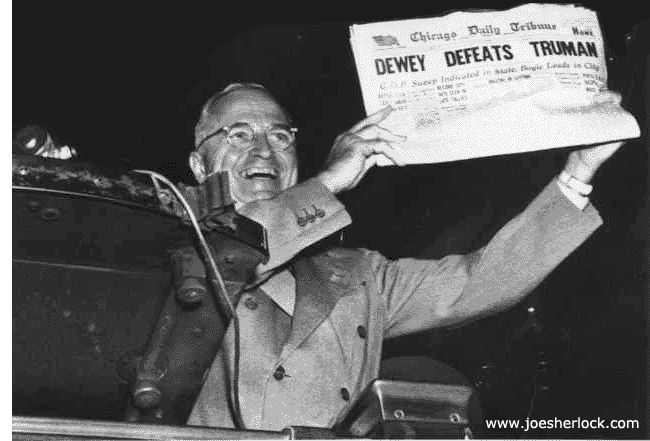 The Cliff Notes version of the 1948 Presidential Campaign was that Thomas Dewey easily won the Republican nomination and that he and Truman battled it out for the presidency. Everyone thought that Dewey would win in a landslide but Harry Truman somehow squeaked through, holding up the iconic copy of the Chicago Tribune, with its headline proclaiming 'DEWEY DEFEATS TRUMAN'. The Cliff Notes version of the 1948 Presidential Campaign was that Thomas Dewey easily won the Republican nomination and that he and Truman battled it out for the presidency. Everyone thought that Dewey would win in a landslide but Harry Truman somehow squeaked through, holding up the iconic copy of the Chicago Tribune, with its headline proclaiming 'DEWEY DEFEATS TRUMAN'.
The real story of the 1948 presidential campaign is far more engrossing. Author Pietrusza artfully reports the drama, the feuds and the unlikely happenings with skill and deftness.
The campaign is full of familiar names: a young, nervous Lyndon Johnson, soon-to-be Chief Justice of the Supreme Court Warren Burger, Commie-spotter Whittaker Chambers, Supreme Court Justice William Orville Douglas, happy lefty Hubert Humphrey, war-hero Douglas Mac Arthur, Richard Nixon, various Roosevelts and American playwright, editor, journalist, ambassador, socialite and U.S. Congresswoman Clare Booth Luce.
Thomas Dewey didn't have it easy in the Republican primaries. He had to fight off Earl Warren, Robert Taft (who ensconced an elephant in the ballroom of the Bellevue Stratford convention hotel in hot, muggy Philadelphia), the soon-to-be perennial candidate Harold Stassen and the ghost of Eisenhower who seemed to flirt off and on as a spirit candidate.
Former Supreme Commander of the Allied Forces in Europe, Dwight Eisenhower, was sought after by both parties for a position on the ticket. But Ike sounded like an idiot sometimes, once suggesting that price inflation could be solved by taxing corporate profits at a rate of 100% and that the proceeds be used to "bring down the prices of products by force of government." Ike also wanted to know if he "could legally run for the Republican and Democrat VP spot simultaneously." This novice had a lot to learn about Presidential politics and how the economy actually worked.
The Democrats fared even worse, despite having a ready-to-run sitting president in the White House. The convention quickly deteriorated to a war for the soul of the Democratic Party. Accidental president Harry Truman was pitted against his embittered, left-wing Henry Wallace (whom Roosevelt replaced with Truman as Vice-President in 1944).
Wallace bolted and formed his own party, the Commie-tinged Progressive Party and was nominated for President.
Meanwhile several Southern states stormed out of the Democratic convention over civil rights issues and formed their own party - the Dixiecrat Party, with stormy young, South Carolina segregationist Strom Thurmond as presidential candidate.
The Democratic party ended up in tatters and nobody liked Truman anyway.
But Harry chose to fight hard. He embarked on a railway journey, crisscrossing the U.S. in search of votes. Harry Truman made a big pitch to the farmers of the midwest and identified with them, blaming their ills on Congress and the Republicans. The farmers and most folks in the Midwest liked what they heard and warmed up to 'ol 'Give 'em Hell' Harry.
Meanwhile, Dewey turned out to be a cold and unfriendly candidate. His stated policies were generic and unspecific. His insufferable arrogance caused him to refuse to speak to crowds just outside Cleveland - a key state - simply because it wasn't on the schedule of his Victory Special train. By contrast, Harry Truman traveled all around that state and, if there was a crowd when the locomotive stopped to take on water or fuel, he'd step out on the open rear balcony of the Pullman-built 'Ferdinand Magellan' observation car and use its built-in sound system to give an impromptu speech. During the campaign, Truman made almost three times as many stops as Dewey.
The DNC published a Truman comic book. Comic books were just coming of age but the Dewey people ridiculed it as too low-brow for them. 'The Story Of Harry Truman', illustrated in graphic novel fashion, helped educate and inspire a lot of voters - the ones who couldn't be bothered to read party platforms or dry editorial page pap.
The Progressive Wallace got lots of celebrity endorsements: Paul Robeson, Pete Seeger, Woody Guthrie, Norman Mailer as well as a young George McGovern. Dewey was praised by the likes of Gary Cooper, Cary Grant, Ginger Rogers and 20 year-old Vic Damone. Truman got few endorsements from the glitterati but was given unlikely support by stage and screen actress and bonne vivante Tallulah Bankhead.
On election day, the Trumans drove themselves to the nearby polling place in Independence, Missouri in the family car. In telling contrast, Dewey and his wife traveled the New York City streets in a limousine, escorted by four policemen on motorcycles to the polling location.
Strange things always happen in election years. Here's a couple from 1948, as reported in Pietrusza's book:
• Penny Olson, wife of ABC-Radio 'Quiz Kids' host Johnny Olson - his later television announcing work included 'Name That Tune' 'To Tell The Truth, Match Game', 'What's My Line' 'The Price Is Right' (he invented the catchphrase: "Come on down!") and 'I've Got A Secret', pondered the possibilities of having her waist-length hair cut, not having done so since Herbert Hoover's defeat in 1932. At that time her father had told her, "You can't get it cut again until a Republican is elected President."
• Nina Warren, wife of Dewey running mate Earl Warren, didn't want to be the vice-president's wife, so she voted for Truman.
Harry S. Truman won due to his hard work, his relentless attacks in speeches about Dewey and his Party and his many campaign stops. Truman managed to capture 80% of the black vote. Dewey was counting on Midwest support, but he lost because he almost never traveled there and basically ignored farmers' pleas for solutions for inflation and falling crop prices. The Dixiecrat Party fell apart and carried only four Southern states in the election; the rest of the South voted solidly for Harry T. The Progressive Party expected to win big in the ultra-liberal Northeast. Instead, those states went for Truman; Harry was apparently liberal enough to suit them.
Most pollsters were very wrong about the election and never detected declining support for Dewey until the final days of the campaign. The media chose to ignore any signs of waning support for Thomas E. Dewey.
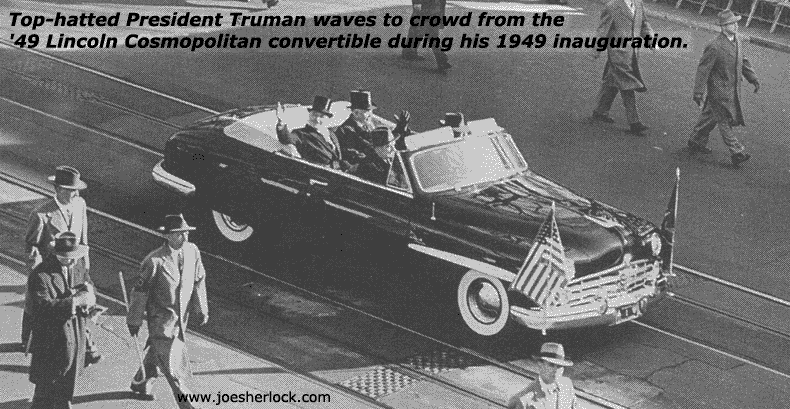
David Pietrusza has made the 1948 campaign an exciting tale, bringing history to life, spellbinding readers with political drama and intrigue while simultaneously presenting the issues, personalities, and controversies of this pivotal era in an entertaining but impartial fashion.
If you enjoyed any of Pietrusza's other works, such as the excellent '1960 - LBJ vs. JFK vs. Nixon: The Epic Campaign That Forged Three Presidencies' (I reviewed the book here), then you'll surely enjoy '1948: Harry Truman's Improbable Victory and the Year that Transformed America'. Highly recommended. (posted 3/7/12, permalink)
'Demonic: How the Liberal Mob Is Endangering America' by Ann Coulter
The TV Ann Coulter is a bombastic flame-thrower of sound bites. In book form, she's still inflammatory and caustic at times but supports her positions with historical facts. In this book, she posits that the demon is a mob, and the mob is demonic, hence the title.
Ann makes a convincing case that the Democratic Party plays to mob elements in American society. She argues that liberals exhibit all the psychological characteristics of a mob.
Sweeping in its scope and relentless in its argument, 'Demonic' explains the peculiarities of liberals as standard groupthink behavior. To understand mobs is to understand liberals. And to understand the destructive power of both.
This well-researched book makes a good companion to Jonah Goldberg's 'Liberal Fascism'. Recommended. (posted 2/27/12, permalink)
'That Used to Be Us: How America Fell Behind in the World It Invented and How We Can Come Back' by Thomas L. Friedman and Michael Mandelbaum
This book begins with a dramatic and well-told story. In 2010, Friedman traveled to China and experienced the new Chinese high-speed train as well as the new, seemingly-perfect Meijiang Convention Center (2.5 million square feet, with gigantic escalators), which had been constructed in only eight months.
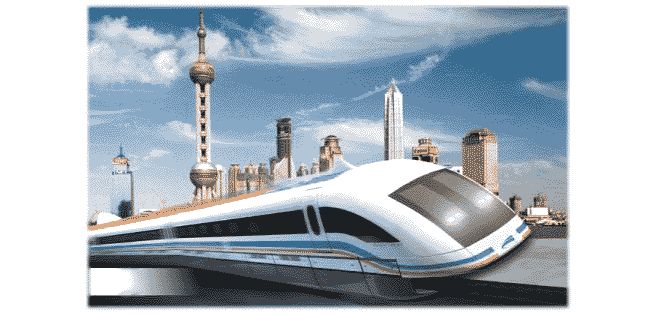
He returns home only to learn from Mandelbaum about the sorry state of the Bethesda stop of the DC Metrorail subway, which still has broken escalators - resulting from poor maintenance; they will be out of service for six months due to the complexity of the parts ordering approval process. And, when Tom Friedman visits the White House, a door handle comes of in his hand. "Oh, it does that sometimes," said a Secret Service agent nonchalantly.
It's much like the study for deepening the harbor in Savannah, GA harbor that was started in 1999. It is 2012, and studies for the environmental impact statement are still not finished.
George Will has channeled our collective frustration by writing, "The Empire State Building was built in 14 months during the Depression, the Pentagon in 16 in wartime. The aircraft carrier USS Yorktown, which earned 11 battle stars in the Pacific and now is anchored here, was built in less than 17 months, back when America was serious about moving forward. Is it necessary to take eight years - just two years less than it took to build the Panama Canal with yellow fever and without computers - to deepen this harbor five feet?"
The authors posit that America is in trouble. We can all agree on that, I think. We can also probably concur that government bureaucracy and excessive regulations are holding us back - broken escalators and undeepened ports being Exhibits 1 and 2, respectively.
They say that the U.S. faces four major challenges on which our future depends - globalization, the revolution in information technology, the country's chronic deficits, and excessive energy consumption. China's educational successes, industrial might and technological prowess remind us of the ways in "that used to be us." Hence the title.
The problem is that their concerns for energy usage and bias for solar and wind power, cause the authors to invent problems where there are none. Yes, we have a problem with foreign oil dependence. And, given the recent rejection by the Obama Administration of the Keystone XL pipeline and other anti-energy moves, there are no solutions offered by progressives. We do, however, have an abundance of natural gas and surprisingly good oil reserves. The pitfalls/shortcomings of wind and solar power have been well documented.
The authors also state that another "great challenge for America's future is the rising national debt and annual deficits, which both have expanded to dangerous levels since the Cold War through our habit of not raising enough money through taxation to pay for what the federal government spends." Note the dreaded Not Raising Enough Money phrase; it's a clear indication that the authors want more taxes, not reductions in spending. They don't seem to realize that reducing spending will hopefully reduce layers of bureaucracy, perhaps resulting in things like more rapid escalator repair.
Friedman and Mandelbaum glibly blame Reagan for the current financial decline and erosion of values, while ignoring the Johnson's Great Society. They also conveniently forgot how Reagan fixed Jimmy Carter's malaise and the dreaded 'Misery Index'. In discussing this and the problems with our educational system, there's no mention of the demise of the American family, political correctness replacing hard truths and me-centric, gimme behavior of too many individuals and parents.
They also want government subsidies to help small companies bridge "the second valley of death," a term new to me. As far as I can tell, it refers to the capital required for a company to ramp up its production, sales and marketing capabilities in order to reach break even and become successful. Guess what? Successful small firms have been doing this for years, without government/taxpayer assistance. How have they done it? By allocating resources, being thrifty and spending wisely. And being clever with programs like Trade Show In A Box.
The authors seem enamored with the idea of bringing the Chinese system of state capitalism to the United States. School grades would surely improve (or the state will take away your kids), escalators would be swiftly repaired (or the Otis technician would be dispatched with a bullet to the back of the head) and productivity would increase (no commuting hassles thanks to factory dormitories). And Secret Service agents would bring a tube of SuperGlue from home for some simple door handle repair, lest they be banished to Mongolia Missoula.
Sadly, the progressive bias of Friedman and Mandelbaum overwhelms a book which contains some good ideas. (posted 2/2/12, permalink)
'11/22/63' by Stephen King
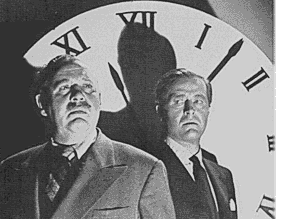 What if you could go back in time and change history? Time travel has been a popular subject for books and movies and not just for the sci-fi crowd. 'A Connecticut Yankee in King Arthur's Court' was written in 1889 by Mark Twain. The excellent 1987 novel, 'Replay' by Ken Grimwood, covers an almost-identical subject matter as King but does so with more interest and much more succinctly. The 1989 movie, 'Bill & Ted's Excellent Adventure' (Party On, Dudes!), was a lot more fun than most time-travel tales. What if you could go back in time and change history? Time travel has been a popular subject for books and movies and not just for the sci-fi crowd. 'A Connecticut Yankee in King Arthur's Court' was written in 1889 by Mark Twain. The excellent 1987 novel, 'Replay' by Ken Grimwood, covers an almost-identical subject matter as King but does so with more interest and much more succinctly. The 1989 movie, 'Bill & Ted's Excellent Adventure' (Party On, Dudes!), was a lot more fun than most time-travel tales.
In the 2002 film 'Timequest', a time-traveler prevents Kennedy's assassination and history takes an alternate course, including the birth of a second son, James Kennedy, who was conceived on the night of November 22, 1963 when Kennedy and his wife return from Dallas. Then there's 'Time After Time' by Karl Alexander. And, of course, Robert Heinlein's classic, 'The Door into Summer'.
King's primary character is Jake Epping, a Maine high school English teacher. Jake's friend Al, who runs the local diner, divulges a secret: his storeroom is a portal to 1958. He enlists Jake on a mission to try to prevent the Kennedy assassination. I got a kick out of the fact that whenever Al went back in time, he purchased 10 pounds of meat and brought it back to 2011 to improve profits at his eating establishment.
King was born in 1947 and should know the period 1958-63 pretty well from his own experience. And, I'd expect a rich author like him to have a good researcher to do fact-checking. So, I was surprised to find numerous historical errors including ...
• 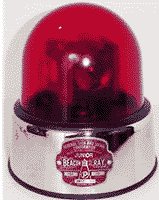 It's unlikely that there were flashing blue lights on police cars in Maine in 1958. Massachusetts State Police have used blue going back to the late 1940. But every other police agency used red gumball machines in the fifties. In 1965, Florida became one of the first states to use blue emergency lights on its official patrol cars. In 1976, NYC was still using rotating red beacons. It's unlikely that there were flashing blue lights on police cars in Maine in 1958. Massachusetts State Police have used blue going back to the late 1940. But every other police agency used red gumball machines in the fifties. In 1965, Florida became one of the first states to use blue emergency lights on its official patrol cars. In 1976, NYC was still using rotating red beacons.
When Charlie Ryan penned his iconic car race song in 1957, he wrote, "I looked in the mirror, a red light was blinkin' ... the cops was after my Hot Rod Lincoln." Nuff said.
• The phrase "Get out!" (meaning "Are you kidding?") was an East Coast epithet in the 1950s. King uses it in 1959 rural Texas. Not believable.
• The National Football Conference did not exist in 1963 (it was founded in 1970).
• According to King, 'Louie, Louie' was being played at a 1961 party in a small Texas town. While the song was written in 1955, it was not well known - having limited success only in portions of the West Coast - until the Kingsmen recorded it in 1963 and made 'Louie, Louie' a national hit.
• There was no Interstate 30 in Dallas during the time period covered. The road was known as the Dallas-Fort Worth Turnpike until 1977.
• King makes reference to smoking on city transit buses in 1958 in Maine and in 1963 Dallas. I found this dubious. Every city bus I know of banned smoking even in that era.
'11/22/63' has a lot of plot twists, subplots and made for an entertaining read, although the too-long 800 plus pages made for an exhausting one. Stephen King has a definite leftist bias. His glaring dig at the Tea Party, the global warming baloney, his caricatures of Texans as a bunch of gun-toting right-wingers and his rewrite of history which makes Republicans the party of racism reduce the enjoyment for readers who don't share his political views. (posted 1/25/12, permalink)
'December 1941: 31 Days that Changed America and Saved the World' by Craig Shirley
This is a fascinating book - each day of December gets its own chapter. The reader learns - from newspapers, popular magazines and other sources - about American life immediately before and after the attack on Pearl Harbor. It revels a great deal about the attitudes and actions of American citizens during that period.
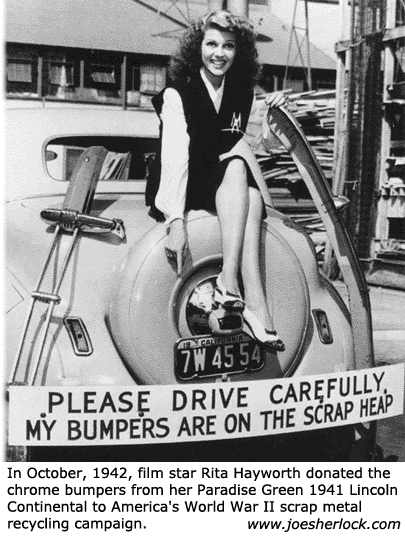 Unfortunately, there are few photos in the book. There is an interesting one of a young and beautiful movie star, 24 year-old Rita Hayworth, donating the chrome bumpers from her pricey Lincoln Continental for a scrap drive. Unfortunately, there are few photos in the book. There is an interesting one of a young and beautiful movie star, 24 year-old Rita Hayworth, donating the chrome bumpers from her pricey Lincoln Continental for a scrap drive.
The book also reminded me of how primitive civilian and military communications were in those days, especially when it came to disseminating information about the December 7th attack.
I thought I knew a lot about World War II but was surprised to learn of the myriad of attacks by Japanese subs on commercial vessels off the West Coast in those days. And that the final Japanese message - delivered to Secretary of State Cordell Hull after Pearl Harbor had already been attacked - was late because the Japanese embassy translators "had been drinking Scotch whiskey all night and the translators were still drunk the next morning."
"Because of the aluminum shortage in America, a new, strong and flexible material was being perfected: plastic. Some scientists predicted a bright future ... someday ... bathtubs, caskets, automobiles and airplane sections may be made of plastic." Yes, plastic was still a novelty in 1941 - used mainly for combs and electrical housings - until after WW II.
Some things never change. The book notes several examples of D.C. corruption and payoffs.
What could have been a truly outstanding book is marred by a myriad of spelling mistakes, punctuation errors and typos. I found the editor's inability to differentiate between 'principle' and 'principal' particularly irritating.
The author included not only major news headlines but also tells the reader what Americans were buying and how much was paid.
Do you want to know the price of potatoes in late 1941? How much people were paying for New Year's Eve at New York's Rainbow Room? You'll find it in the book.
I learned that a tin of Anacin tablets sold for 14¢ and a five-tube countertop radio could be had for $9.95 or "just 50¢ down and 50¢ per week." A GE 100-watt lightbulb cost 15¢.
'December 1941' does an excellent job of capturing the feeling of the era. Despite its shortcomings, I found the book informative and enjoyable. (posted 1/19/12, permalink)
'Hound Dog: The Leiber & Stoller Autobiography' by Jerry Leiber & Mike Stoller, as told to David Ritz
Published in 2009, this book is about Leiber & Stoller, the prolific song-writing duo whose music and lyrics defined the music of the mid-1950s to mid-1960s. Lively and colorful, the stories in the book provide some insight into their personalities and creative processes.
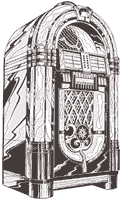
L&S created such top hits as 'Hound Dog', 'Yakety Yak', 'Stand By Me' and 'Jailhouse Rock'. The book is less of an autobiography than an all-too-brief collection of memoirs and is written like an interview with Jerry and Mike alternating as they relate the story of their rise in the music industry. I found this alternating storyteller technique annoying.
Nevertheless, 'Hound Dog' book was an informative and enjoyable read. (posted 1/9/12, permalink)
'Steve Jobs' by Walter Isaacson
Steve Jobs wanted to change the world: "put a dent in the universe." And he did.
Jobs was a creative genius, perfectionist and control freak prone to insults, rages and bouts of crying when he didn't get his way. His mercurial temper and was legendary. Job's penchant for all-things-Zen never resulted in inner serenity or Zen-like calm.
His weird eating habits and persnickety tastes played a dominant role in both his family and social life. He could take weeks or months to choose simple furniture or appliances. He refused to put license plates on his cars and routinely parked in handicapped places. And he often smelled bad.
His quirks and biting put-downs drove talented people from Apple. Even Apple's cofounder, The Woz, learned to keep his distance.
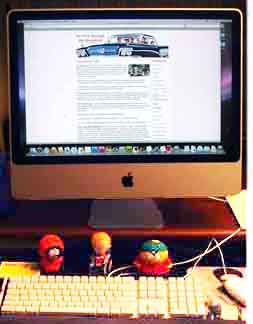 Nevertheless, Jobs had the ability to envision and commercialize products no one else could. He was the mastermind behind the iPhone, iPad, iPod, iMac and iTunes. He changed the worlds of computing, recorded music and communications. As some have said, he knew what we wanted before we did, creating new markets out of thin air. Nevertheless, Jobs had the ability to envision and commercialize products no one else could. He was the mastermind behind the iPhone, iPad, iPod, iMac and iTunes. He changed the worlds of computing, recorded music and communications. As some have said, he knew what we wanted before we did, creating new markets out of thin air.
In short, Steve Jobs was a Brilliant Asshole. He was also a cagey player in the world of corporate warfare.
When Jobs returned to Apple in 1997, he soon developed a distaste for CEO Gil Amelio. A seasoned presenter and performance perfectionist, Jobs shook his head as he watched Amelio's embarrassing presentation at the January Macworld. Amelio had refused to rehearse and winged his lengthy and rambling presentation. Jobs began referring to him as 'a bozo' and plotted his downfall. Within six months, Amelio was gone.
Jobs outsmarted fellow asshole and Disney CEO Michael Eisner. Job's Pixar got the upper hand in the animation biz and soon Disney had to buy Pixar in order to ensure a supply of high-quality animated movies - its core business. By then, Eisner was no longer running Disney.
I confess that I'm a Mac fan. We've owned Mac computers since 1991. This blog is created on an iMac with a 24 inch screen. The videos posted on my model train site were shot with an iPod nano. During the 1980s, Apple Computer was one of my company's largest customers for acrylic displays. It was a pleasure to deal with Apple employees; they were upbeat, focused and open to ideas and suggestions.
Steve Jobs oftened disclaimed money as a business motive but consider this: In 2010, Apple had just 7% of the personal computer market but it grabbed 35% of the operating profit in the marketplace. In the first quarter of 2011, the market for Windows-based PCs dropped by 1% while the market for Macs grew 23%. Steve knew how to make a good profit. And build market share.
This is one of the best biographies I've ever read. The book combines the life of Steve Jobs and the evolution of Apple Computer and its products. Both are so intertwined that they are inseparable. The man was an amazing and inspiring entrepreneur. He dreamed it. He did it.
Author Isaacson makes a convincingly makes the case that Jobs will be remembered not just for his business acumen but for profoundly changing society just like that quirky innovator Henry Ford two generations before him.
'Steve Jobs' is not just a good book. It's insanely great. (posted 12/20/11, permalink)
More book reviews are posted here.
Other Pages Of Interest
copyright 2011-12 - Joseph M. Sherlock - All applicable rights reserved
Disclaimer
The facts presented in this blog are based on my best guesses and my substantially faulty geezer memory. The opinions expressed herein are strictly those of the author and are protected by the U.S. Constitution. Probably.
Spelling, punctuation and syntax errors are cheerfully repaired when I find them; grudgingly fixed when you do.
If I have slandered any brands of automobiles, either expressly or inadvertently, they're most likely crap cars and deserve it. Automobile manufacturers should be aware that they always have the option of trying to change my mind by providing me with vehicles to test drive.
If I have slandered any people or corporations in this blog, either expressly or inadvertently, they should buy me strong drinks (and an expensive meal) and try to prove to me that they're not the jerks I've portrayed them to be. If you're buying, I'm willing to listen.
Don't be shy - try a bribe. It might help.
|

